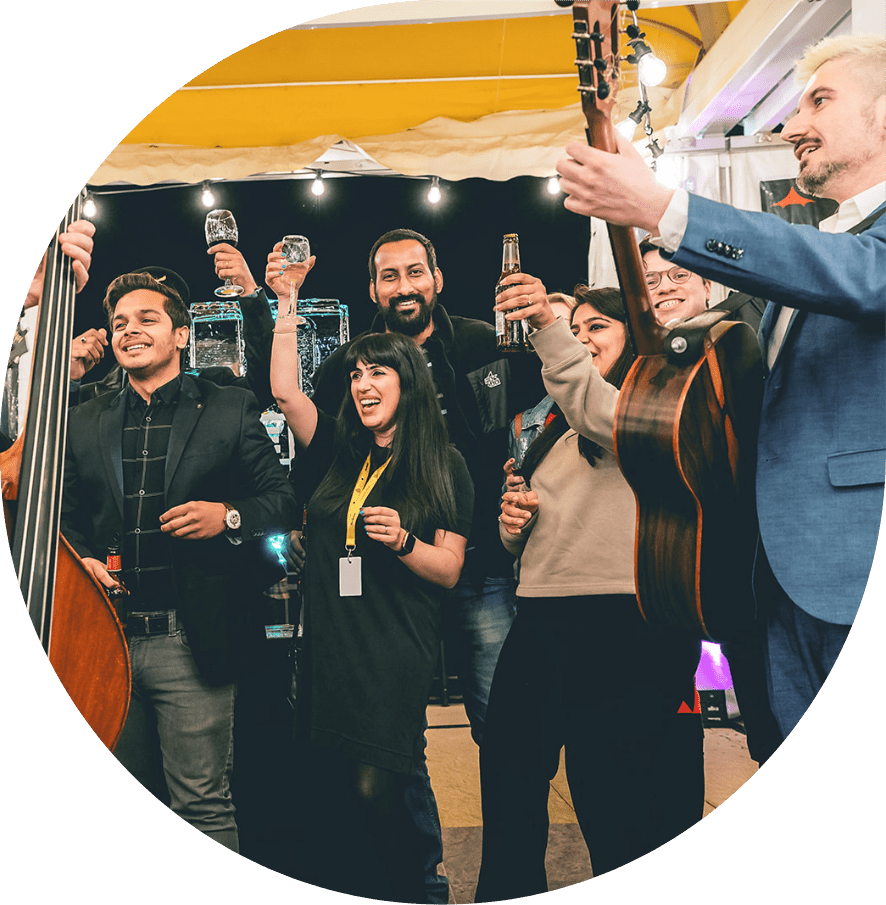
What our clients say
Don’t just take our word for it.
Take a read-through of what our clients have to say about us!
Contact us
- All
- activity-comment
- activity-comment-author
- Conference
- Conference
- core-user-registration
- Creative
- Creative
- Europe
- Event Planning
- Experiential
- first-event-base
- friends-request
- friends-request-accepted
- groups-details-updated
- groups-invitation
- groups-member-promoted
- groups-membership-request
- groups-membership-request-accepted
- groups-membership-request-rejected
- Incentive
- Incentive
- Insights
- International
- News
- Operations
- Quick Links
- settings-verify-email-change
- Sustainability
- Top Level Menu
- Trends
- UK
- Virtual
- Virtual
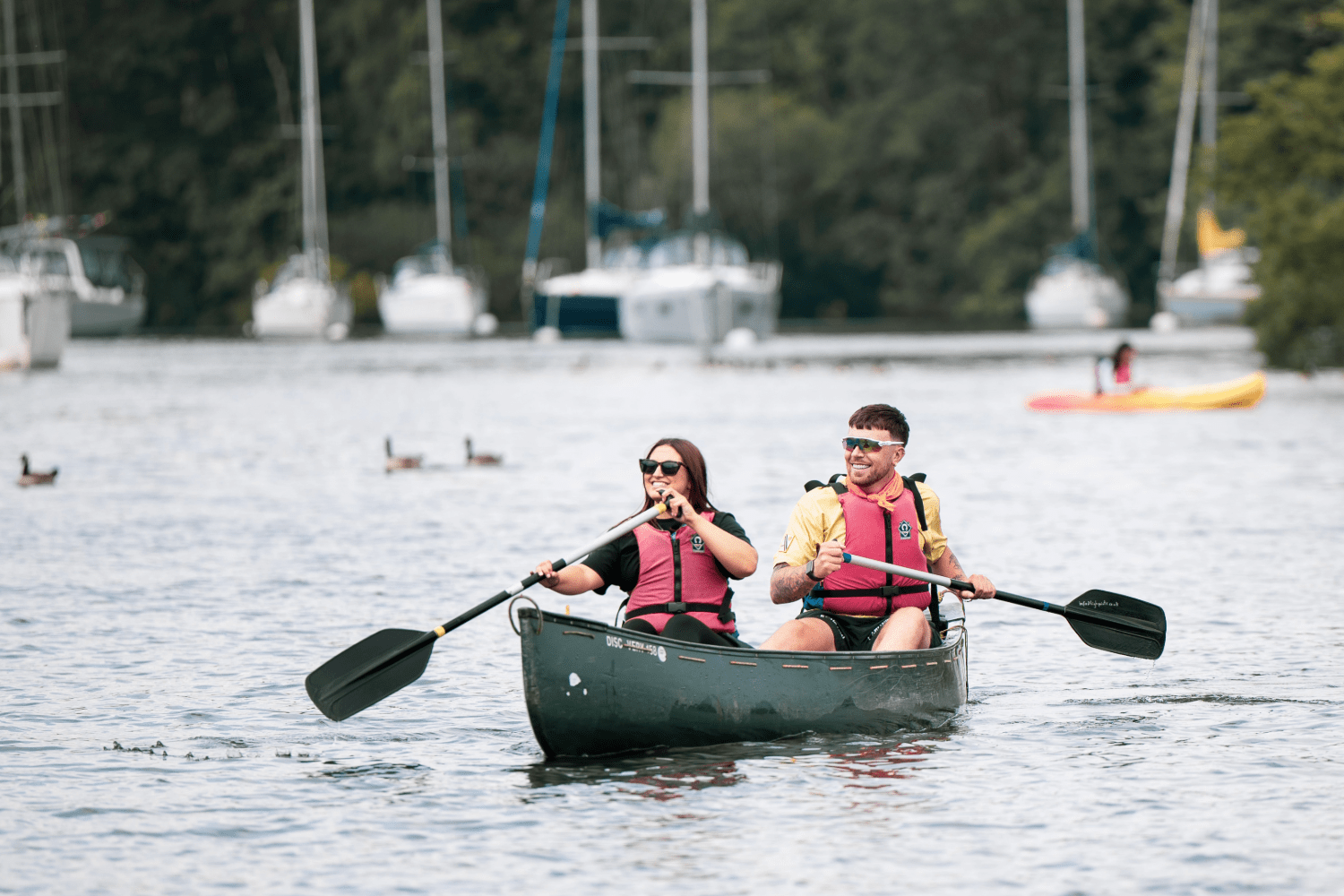
The Rise of Human-Centric Events, Where Mental and Physical Health Take Centre Stage
It’s official: events are no longer just about bright lights and shiny stages. Today’s most impactful events are human-centric, putting mental and physical wellbeing at their core. As we navigate an increasingly connected, and sometimes overwhelming world, people are seeking out experiences that prioritise authenticity, calm, and self care.
With 65% of UK attendees craving experiences that nurture them inside and out, brands and organisers are reimagining what an event can be. This shift isn’t just about offering healthier snacks or a quiet corner – it’s about weaving wellbeing into the very element of an event. From sensory-friendly spaces to nature-infused design, the focus is clear: create experiences that recharge and restore.
Wellbeing isn’t a luxury anymore. It’s the new gold standard for experiences that leave us healthier, happier, and more in tune with ourselves.
From Stress to Serenity: A Shift in Priorities
It’s no secret that people are feeling the strain. The national stress epidemic, paired with the cost-of-living crisis, has sparked a re-evaluation of what matters most. For many, that means taking better care of themselves and wanting the events they attend to do the same.
Gone are the days when alcohol-fuelled gatherings were the default. Today’s event-goers are drawn to experiences that prioritise rest and rejuvenation – think alcohol-free bars, nature-based activities like forest bathing, and even rucking (yep, that’s hiking with weighted backpacks!) as a unique blend of fitness and social connection.
Wellness-First Experiences: More Than Just a Trend
A big part of this shift is a move towards experiences that make it easy to keep up with healthy habits, even in the busiest schedules. Quiet areas for meditation and time-outs for longer events are becoming must-haves. These little pockets of calm help attendees recharge – so they can fully enjoy everything else on offer, without feeling like they’re sprinting from one session to the next.
Take Morning Gloryville, for example – the sober rave that swaps sticky dancefloors for sunrise boogies and healthy smoothies. Or Self Space Slow Dating, where group workshops led by therapists create a safe, relaxed environment for forging meaningful connections. It’s proof that prioritising mental and physical health doesn’t have to mean compromising on fun and vibrancy.
Designing Human-Centric Events for the Future
So, what does this all mean for event planners and brands? It’s time to rethink the entire event experience, from start to finish:
1. Build in flexibility: Offer options that cater to different comfort levels and wellness needs.
2. Bring nature in: Even a splash of greenery or access to outdoor spaces can make a big difference.
3. Prioritise rest: Dedicated quiet zones or sensory-friendly spaces help people feel truly cared for.
4. Create alcohol-free alternatives: Let attendees choose how they celebrate, and ensure everyone feels included.
As the UK’s events market grows, human-centric design is emerging as the essential ingredient. Because in a world where stress is sky-high and social circles are shrinking, events that nurture mental and physical wellbeing aren’t just nice-to-haves, they’re non-negotiable.
At the end of the day, people don’t just want an event; they want an experience that leaves them feeling healthier, happier, and more connected to themselves. Let’s make that the new standard.
Ready to create events that truly put people first?
Get in touch with our team to explore how we can help you design human-centric experiences that prioritise wellbeing, connection, and lasting impact.
Hungry for more insights on the future of events?
Download our report to discover the latest trends, data, and expert analysis shaping the events industry.
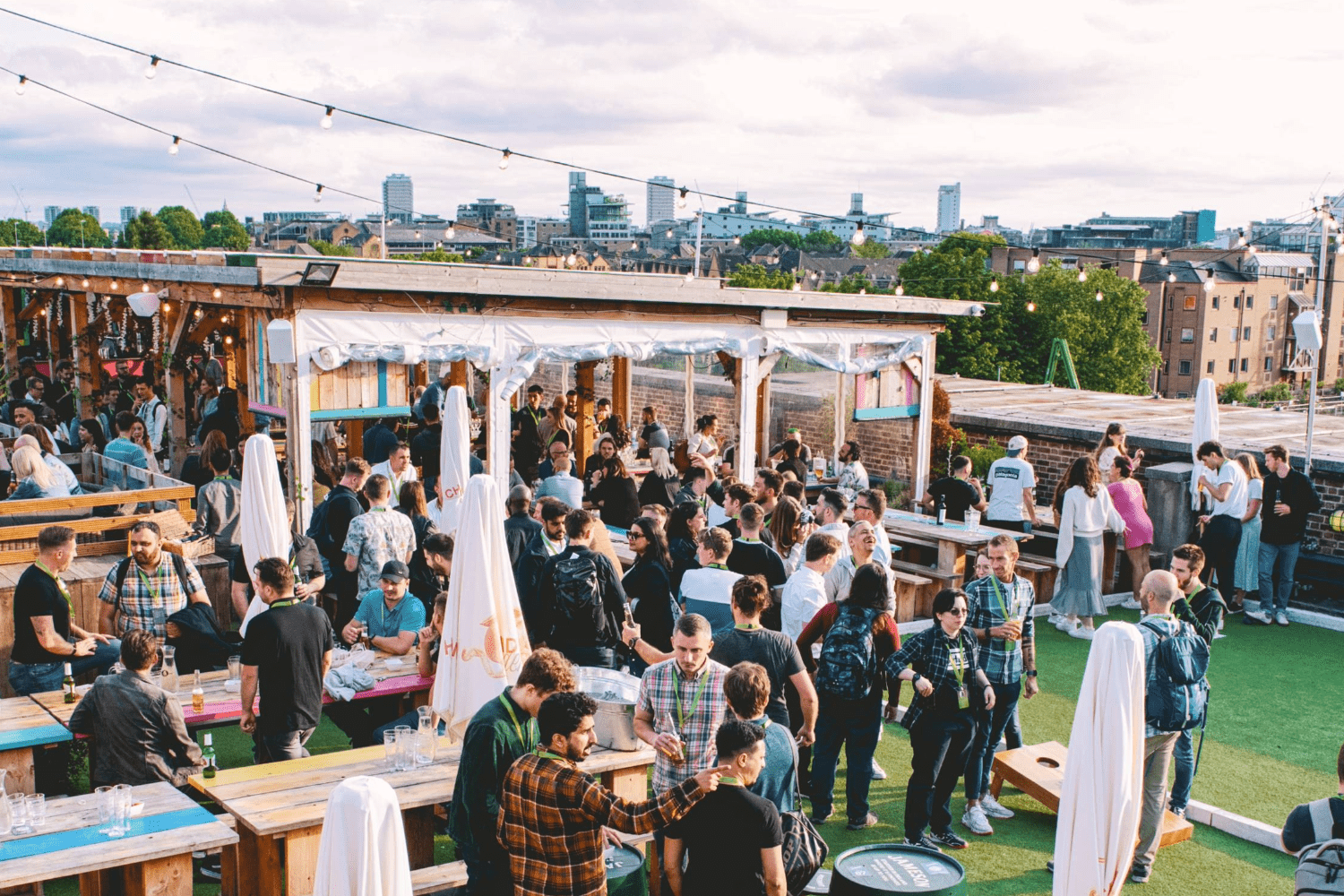
Why Events Are Essential for Fast-Growing Companies: Boost Culture, Engagement and Brand Impact
You’re hiring like mad. Your Slack is a wild west of new names. And someone just said, “What exactly do we do again?”
Welcome to rapid growth—a thrilling, chaotic, high-stakes phase where events aren’t just a line on the budget. They’re your glue. Your megaphone. Your vibe-setter.
Here’s why events are essential to help fast-growing companies scale successfully, both internally and externally.
Internal Events: Strengthen Team Culture and Employee Engagement
Keep Teams Aligned Through Strategic Events
As your business grows, alignment can slip. Town halls, away days, onboarding events and leadership briefings cut through the noise to keep everyone pulling in the same direction.
Companies with strong internal alignment are 72% more profitable than those without (Harvard Business Review).
Boost Employee Engagement Through Shared Experiences
Culture isn’t about perks—it’s about people feeling connected. And connection takes moments. Whether it’s a welcome event for new joiners or a team-building offsite, events foster belonging, motivation and collaboration across departments and locations.
Recognise and Retain Talent by Preventing Burnout
Fast-paced growth can lead to burnout without pauses for recognition and recharging. Internal events give people the space to step back, celebrate wins, and reconnect with the mission.
59% of engaged employees are less likely to look for a new job in the next 12 months (Gallup).
External Events: Accelerate Brand Growth and Lead Generation
Increase Brand Visibility with Memorable Experiences
From product launches to thought-leadership panels, events put your brand in the spotlight. They’re your opportunity to stand out, tell your story and be remembered.
Live, virtual or hybrid—events extend your reach and position your business as bold, credible and human.
Generate High-Quality Leads and Business ROI
Done right, events are high-performing growth tools. They offer a platform to meet prospects, build relationships and convert interest into results.
The Event Marketing Institute found that every £1 spent on B2B events returns an average of £4.48.
Humanise Your Brand and Build Long-Term Loyalty
People don’t build loyalty with logos—they build loyalty with people. Events create emotional touchpoints that help your audience connect with the faces and values behind your brand.
Let’s Talk Budgets: Cost, Value and the Risk of Not Investing
One common misconception is that events have to come with big budgets to be impactful. The truth? You can create meaningful, results-driven experiences at a range of investment levels.
Whether you're planning a strategic team session or a large-scale brand activation, there are smart ways to scale events to fit your goals and resources. The key is balancing cost with value — focusing on the outcomes you want to drive, not just the spend.
We can help you:
- Work within your available budget to design high-impact events
- Prioritise spend for maximum ROI and long-term value
- Build a strong case for internal buy-in
- Understand the risk of not investing — from missed opportunities to disengaged teams
In short: investing in events isn’t a luxury; it’s a strategic decision that pays off in brand growth, employee engagement, and business results.
Why Events Are Critical for Sustainable Growth
Events are more than a marketing tactic or HR initiative. For fast-growing companies, they’re essential tools to:
- Align and energise teams
- Strengthen culture and retention
- Generate leads and partnerships
- Build awareness, trust and loyalty
- Drive business outcomes in a human, lasting way
In a fast-paced scale-up environment, the most memorable moments matter.
Plan Your Next Growth-Focused Event with First Event
At First Event, we help fast-growing companies design and deliver events that drive real impact—from internal strategy rollouts to bold brand activations. Our team blends creativity, planning and seamless delivery to create standout experiences that scale with your business.
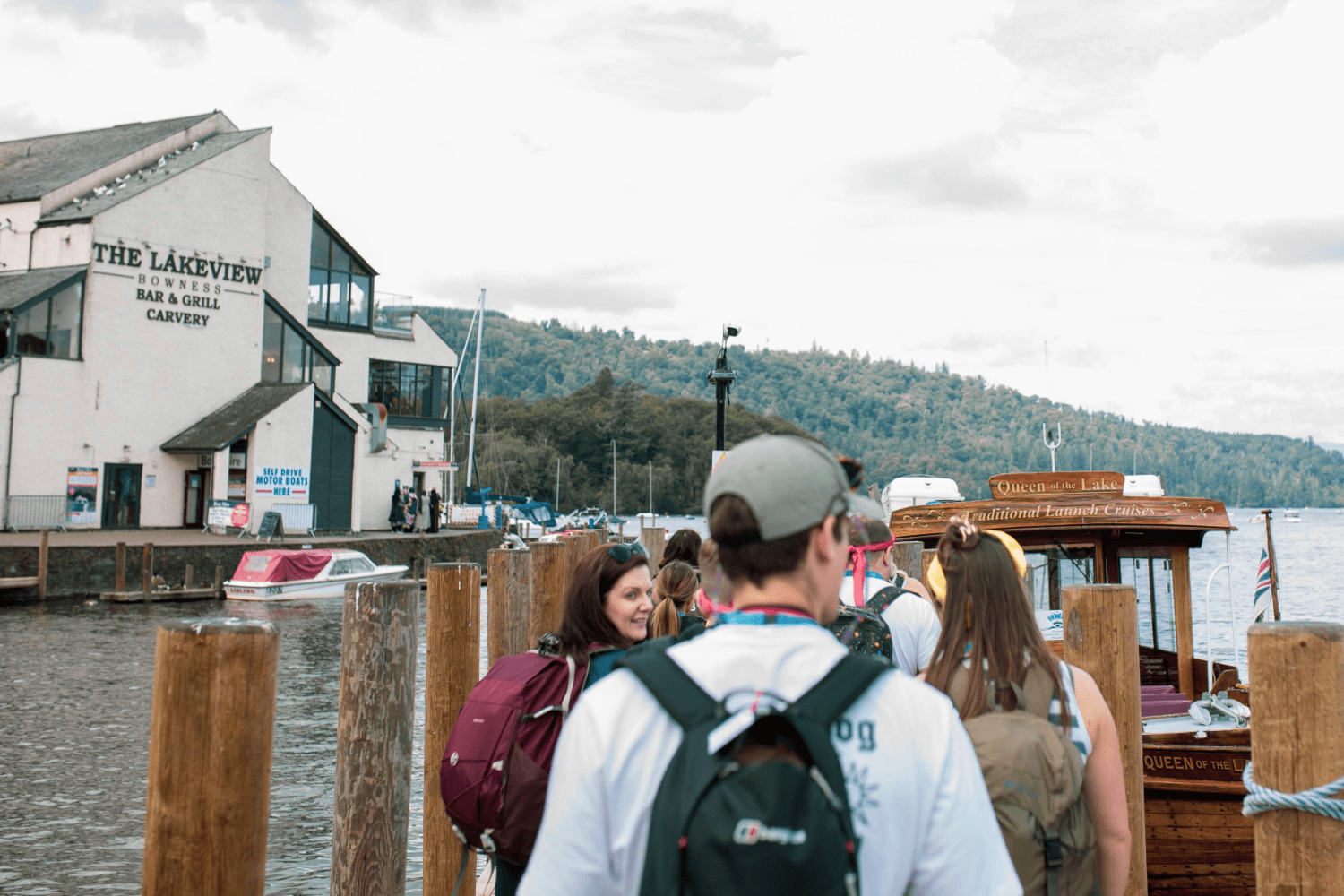
How to Replace Hustle Culture With Mindful Experiences
What Is Hustle Culture and Why Are People Rejecting It?
Hustle culture glorifies being constantly busy — always working, always achieving, and always online. It's built on the belief that success comes from relentless effort, often at the expense of sleep, relationships, and mental health.
But people are waking up. Our research with our partner Canvas8 into social wellbeing trends reveals that 68% of people say they feel overwhelmed by the pressure to be ‘always on’. The consequences? Rising burnout, fractured attention, and disengagement at work.
This shift is driving demand for human-led, emotionally intelligent experiences that prioritise presence, connection and wellbeing.
Why Mindful Experiences Are the Antidote to Burnout
Mindful experiences help individuals and teams reconnect with purpose, build emotional resilience, and foster deeper engagement. Whether at work, in daily routines, or through thoughtfully curated events, these moments of intentional pause can have a big impact.
The Science Behind Mindfulness and Productivity
Research shows that mindfulness improves:
- Focus and memory
- Stress regulation
- Creative problem-solving
- Job satisfaction
And when it comes to combating loneliness and disconnection — something strongly tied to hustle culture — our report found that 73% of people say they value emotional connection more now than they did before the pandemic.
It’s not about doing less — it’s about doing what matters more, with presence.
How to Create Mindful Experiences in Your Workplace or Event Strategy
1. Prioritise Purpose Over Productivity
Before diving into any project or event, ask:
- Why are we doing this?
- What do we want people to feel?
- What long-term impact are we aiming for?
Shifting the focus from output to outcome can change the way people show up. In our report, only 1 in 5 workers said they feel a genuine sense of purpose in their day-to-day job — a clear call to reimagine experiences that foster meaning, not just metrics.
2. Design with Human Needs in Mind
From wellness breaks to safe spaces for reflection, even small touches can create a more inclusive, balanced experience. Consider integrating:
- Guided meditation or breathwork
- Moments of digital detox
- Immersive, slow-paced environments
3. Encourage Connection Over Competition
Hustle culture can be isolating. Mindful experiences prioritise collaboration and emotional connection. Think:
- Fireside chats instead of hard-hitting panels
- Shared meals or nature walks
- Peer storytelling over formal presentations
FAQs About Mindful Work and Experiences
How can mindful event design improve business outcomes?
Mindful experiences are proven to enhance attention, engagement, and message retention — all key metrics for event success. They reduce cognitive overload and increase attendee satisfaction, which in turn boosts NPS, drives deeper brand affinity, and improves follow-up actions such as lead conversion or internal engagement. It’s about designing for clarity, not chaos.
What’s the commercial case for replacing hustle culture in events?
When experiences are designed with wellbeing and psychological safety in mind, people contribute more freely, absorb more information, and form more valuable connections. This leads to better collaboration, higher quality discussions, and greater post-event momentum — all of which support your business goals. Our report with Canvas8 shows that 76% of people are more likely to trust a brand that prioritises their emotional wellbeing.
How do I measure the impact of a more mindful experience strategy?
Beyond basic feedback forms, consider measuring emotional engagement, depth of connection, and behavioural intent. You can use tools like emotional analytics in post-event surveys, content dwell time, or even monitor internal culture shifts (e.g. reduced burnout, increased collaboration) after internal events. Align these measures with your original event objectives — whether that’s lead quality, retention, or culture change.
How do I future-proof our event strategy with mindful experiences?
The next generation of audiences demands more than inspiration — they want values alignment, psychological safety, and space for reflection. Integrating mindful moments helps build more emotionally intelligent brands that attract and retain talent, clients, and partners. It’s a shift from performance at all costs to performance with purpose — and it’s a competitive advantage.
Ready to Make the Shift?
At First Event, we help brands and teams move away from the pressures of hustle culture and towards intelligent, wellbeing-led experiences that connect, inspire and last.
Discover how to create real impact in our report Unlocking Experiences: What different generations expect from events.

Why Events Need to Drive Momentum — Not Just Moments
Moments are easy to create. A slick stage, a big-name speaker, some great lighting — and you’ve got a good event.
But in today’s landscape, where budgets are scrutinised and brand loyalty is hard-won, good isn’t good enough. Events must do more than dazzle. They need to deliver direction.
For marketing, HR, and leadership teams tasked with driving change — whether that’s launching a new strategy, building culture, engaging customers or reinvigorating teams — the value of an event lies in what it drives, not just what it looks like.
Why this matters now
Most people won’t remember your agenda. But they will remember how you made them feel — and what they were inspired to do next.
And here’s the kicker:
- 74% of attendees say they have a more positive opinion about a company after attending an event — but without follow-up or integration into a wider strategy, that sentiment often fades.
- Only 20% of event organisers say they have a clear post-event engagement plan, according to EventMB.
- Meanwhile, 52% of marketers say driving pipeline and revenue is their biggest event challenge — because they aren’t linking moments to long-term movement.
That next step is where the opportunity lies. Because when you treat events as isolated experiences, you miss a vital chance to shape thinking, shift behaviour and build lasting connection.
Momentum-led events build on the idea that real change isn’t sparked in a single moment — it’s sustained through a clear thread of narrative, purpose and action. Done well, they become an extension of your brand strategy — not a bolt-on.
What’s at stake?
Internal alignment
69% of employees are more likely to stay with a company for three years if they experience strong onboarding and cultural alignment — events are your opportunity to bring that culture to life. But without clear links to your values or goals, the message gets lost.
Customer loyalty and trust
According to Edelman, 81% of consumers say they must be able to trust the brand to do what’s right. Events can demonstrate that — but only when they’re authentic, purposeful, and consistent with your wider brand experience.
ROI and resource pressure
The average B2B event budget has increased by 17% over the past year (Bizzabo, 2024), yet many organisations still struggle to prove long-term impact. To get real value, you need more than a moment of applause — you need sustained action and engagement.
How to create momentum, not just moments
- Start with purpose, not just logistics
Ask: what’s the lasting impact we want to create? How does this event support our brand strategy, culture or commercial goals?
- Design for beyond the day
Build in touchpoints before and after the event to extend engagement. Research shows that multi-touch event strategies can increase attendee conversion by 50%.
- Create a red thread
Align your content, messaging and experience around a single clear narrative. Make it easy for people to understand not just what’s happening — but why it matters.
- Plan for impact
Track behavioural shifts, feedback, and engagement — not just attendance. Use this insight to refine future activity and prove long-term value.
Events are one of the few opportunities you have to bring people together and truly own the experience. When done with intention, they don’t just create moments of inspiration — they become catalysts for action, connection, and growth.
So ask yourself: what’s the lasting legacy of your next event?
Looking to strengthen your brand strategy with insight-led thinking? Explore our latest report with Canvas8 to see how behavioural science can shape smarter brand decisions.

Why Going It Alone Doesn’t Cut It: The Case for a Full-Service Event Partner
Pulling off a standout event is no small feat. You need strategy. Creative. Logistics. Tech. A flair for the unexpected—and the calm to handle the chaos.
Trying to do it all in-house? That’s a fast track to team burnout, missed opportunities, and bland experiences.
The smarter move? Partner with a full-service event agency that lives and breathes this stuff. Here’s why it’s not just helpful—it’s essential.
1. You Get Proven Expertise – Not Guesswork
The Cost of Inexperience
You wouldn't ask your finance team to produce a video campaign. So why ask your marketing exec to manage an international conference?
A full-service agency brings specialised expertise—so you get flawless logistics, smarter budgeting, and creative ideas that make your event unforgettable.
49% of event planners say time constraints are their biggest challenge. With an agency, you're not guessing. You're backed by battle-tested professionals.
2. You’ll Stand Out – for the Right Reasons
Why Strategic Creativity Wins
Events are about more than free prosecco and branded notebooks. They’re brand moments—designed to spark emotion, shift perception, and drive action.
A full-service agency will align every touchpoint with your brand strategy:
→ The right tone of voice
→ The right format
→ The right audience experience
80.4% of marketers say in-person events are their most effective marketing channel. With an agency on your side, you don’t just show up—you show off (in the best way).
3. One Team. Full Control.
The Case for Centralised Delivery
Juggling freelancers, internal teams, tech suppliers, and venue managers? That’s a recipe for crossed wires and dropped balls. An agency simplifies everything—strategy, delivery, logistics, design, and ROI tracking—all in one place. One team, one plan, zero stress.
4. Better Tech Without the Overhead
Event Tech Without the Headaches
From seamless virtual platforms to tailored registration systems and insightful data dashboards, event agencies come fully equipped with the latest technology. No need for you to waste time researching, subscribing, or training your team. In fact, 67% of UK event organisers agree that technology enhances the attendee experience—yet over half find choosing the right tools a challenge.
5. Results That Go Beyond the Day
Turn Engagement Into ROI
An agency’s job doesn’t end when the stage lights dim. We track, report and optimise—helping you turn engagement into insight and results into strategy. 71% of marketers say proving ROI from events is their biggest challenge. We help you prove value—and plan for what’s next.
Why Choose an Event Agency?
Because scaling businesses can’t afford mediocre moments.
At First Event, we bring the strategy, creativity and delivery that makes your event a brand-defining experience. Less risk. More wow. Real results.
Ready to Elevate Your Events?
Let’s talk about how we can help you design unforgettable, results-driven experiences—without the stress.
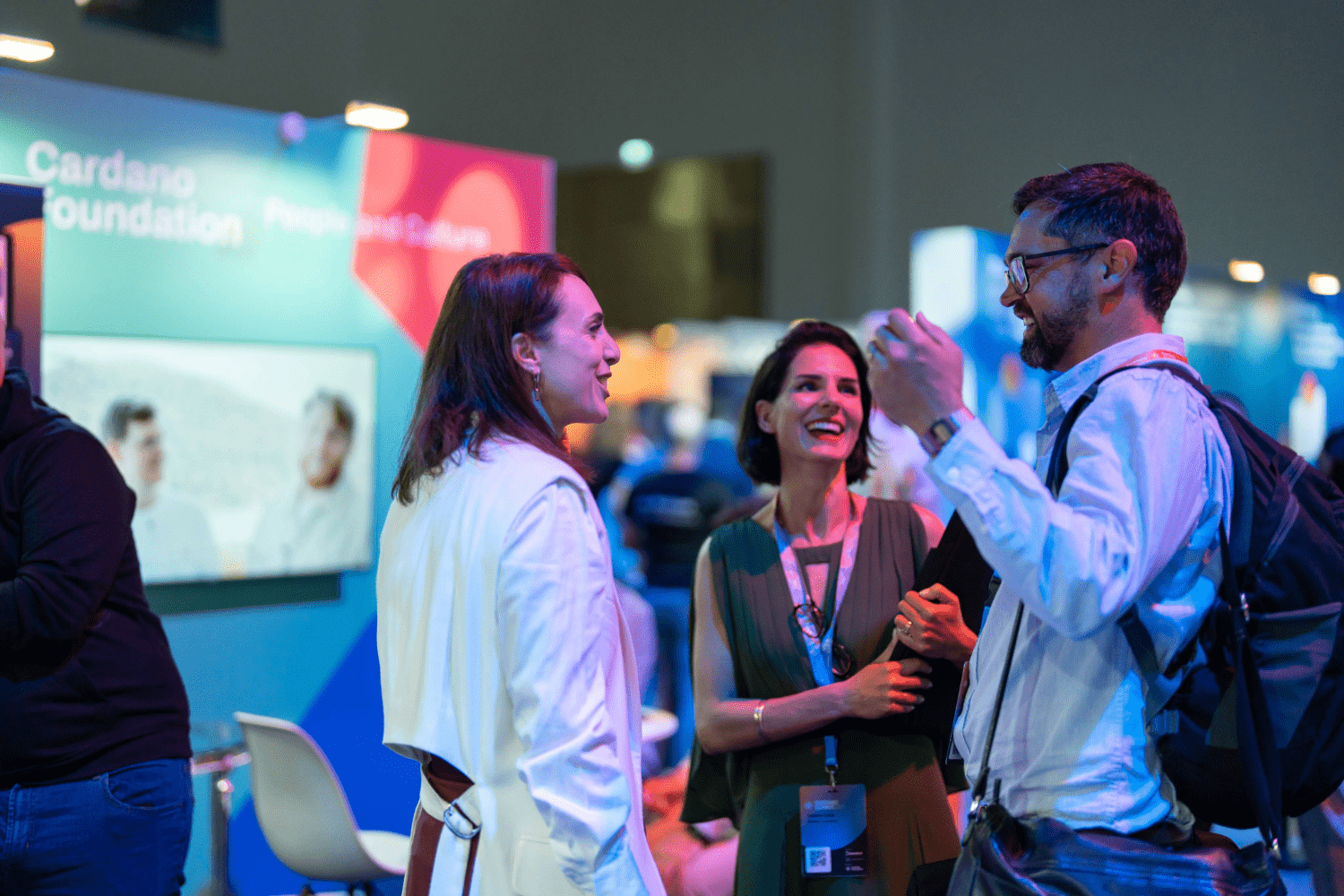
The Conference is Dead – Enter the Era of Intentional Gathering
There’s a strange kind of irony in how we talk about community now. A word that once conjured up friendly gatherings, village halls, dinner tables. Today, in the context of work, it lives in Slack threads, Zoom chats, or the margins of Google Docs. If that sounds a little sterile, it’s because it often is.
But here’s the thing, we haven’t stopped craving connection. We’ve just misplaced where to look for it.
For many, work used to be a key site of community. You had office birthdays, post-pitch pub trips, eye-rolls across meeting rooms. Casual rituals that created a sense of belonging. Now, with the rise of remote and hybrid work, we’re left with digital ghost towns: productivity without proximity. Meaning, gone missing.
And this sense of disconnect? It’s showing up differently across generations.
Generational Disconnect: Different Struggles, Same Longing
Gen Z are actively against the performative grind; jobs that pretend to nourish, but actually deplete. Millennials and Gen Xers are in the burnout bunker. Millennials were promised passion-payoffs and got precarity instead. Gen X, sandwiched between kids and caregiving, are grinding through career plateaus, ageism, and rising living costs, with just a third of UK Gen Xers feeling financially well, and many expecting to work well past retirement age due to inadequate savings and pension shortfalls. (And it’s not much better elsewhere – similar patterns are playing out across much of Europe, North America, and beyond).
But it’s not just generational — it’s also national.
A National Crisis of Connection
Recent Gallup research reveals that more than 1 in 4 British workers experience daily sadness, and 17% feel lonely at work. Just 10% feel engaged with their jobs, placing the UK among the lowest-ranked countries in Europe for workplace engagement . That’s not a vibe problem.
That’s a leadership and cultural design issue.
And yet, the answer isn’t no work at all. It’s better spaces for it.
People don’t hate effort. They hate exploitation. They’re not rejecting purpose, they’re rejecting bad PowerPoints, tone-deaf leadership, and wellbeing policies that feel like copy-paste slides.
B2B Events as Cultural Prototypes
This is where B2B events can flip the script. Not just as trade expos or conferences. But as activation spaces. Pop-up environments where we don’t just sit through panels; we shape and prototype better ways to work.
The era of one-way keynotes and tick-box panels is giving way to something deeper. People don’t want to be talked at – they want to be brought in. The most valuable room at any event? It’s not the stage. It’s the space where ideas are tested, stories are exchanged, and futures are shaped together. Facilitation over presentation. Dialogue over monologue. It’s not about delivering answers, it’s about designing the conditions for better questions and insights.
Leading by Example: Events That Get It Right
And we already have examples of this cultural pivot:
- Assembly, a design and tech gathering in Detroit, built its latest event around one theme: “Radical hospitality.” It replaced classic breakout rooms with collective meals and communal journaling.
- Campfire, a leadership offsite brand, trades corporate retreats for woodland cabins, ambient soundbaths, and fireside reflections. No decks, no KPIs – just presence.
- With our clients such as in the Food Delivery, Blockchain and Digital industries, we’ve seen how rethinking event formats can reawaken connection; whether it’s creating space for unstructured intimacy, building multi-sensory experiences, or designing for emotional resonance.
The Call for Emotional Architecture
These above examples aren’t gimmicks; they’re signals. Signals that people are desperate for work environments that nourish as much as they inform. And this shift isn’t siloed. While Gen Z push for transparency and alignment, Millennials – now caretakers, mid-managers, and ex-hustlers – are recalibrating. Many would take a 20% pay cut for better work-life balance. Gen Xers? They were the original architects of work-life balance. Now, they’re juggling kids, parents, finances, and purpose — all inside one overstretched working week.
So when a B2B event gets it wrong – more booths, more brands, more burnout – it doesn’t just feel flat. It feels like a missed opportunity. But when it gets it right? It becomes a live R&D lab for workplace culture. A prototype of what the workplace could be.
Designing the Future of Work, Together
So here’s the invitation.
Design events that feel like the kitchen table, not the conference centre. Design with emotional architecture in mind. Less “networking drinks,” more unstructured IRL intimacy and purpose. Make the soft space the strong space – where questions of worth, identity, and shared ambition are allowed to breathe.
As Creative Strategist at First Event, I’m helping lead a shift toward designing with emotional architecture in mind; and as a team, we create b2b events for people to reconnect with purpose — because good employership starts with resonance, not rules.
Because connection isn’t a KPI. It’s a condition. And right now, it’s in short supply.
Whether you’re rethinking your next conference, designing a leadership offsite, or wondering what a breakout room could be, we’re here to co-create.
Written by Chloe Patrickson, Creative Strategist
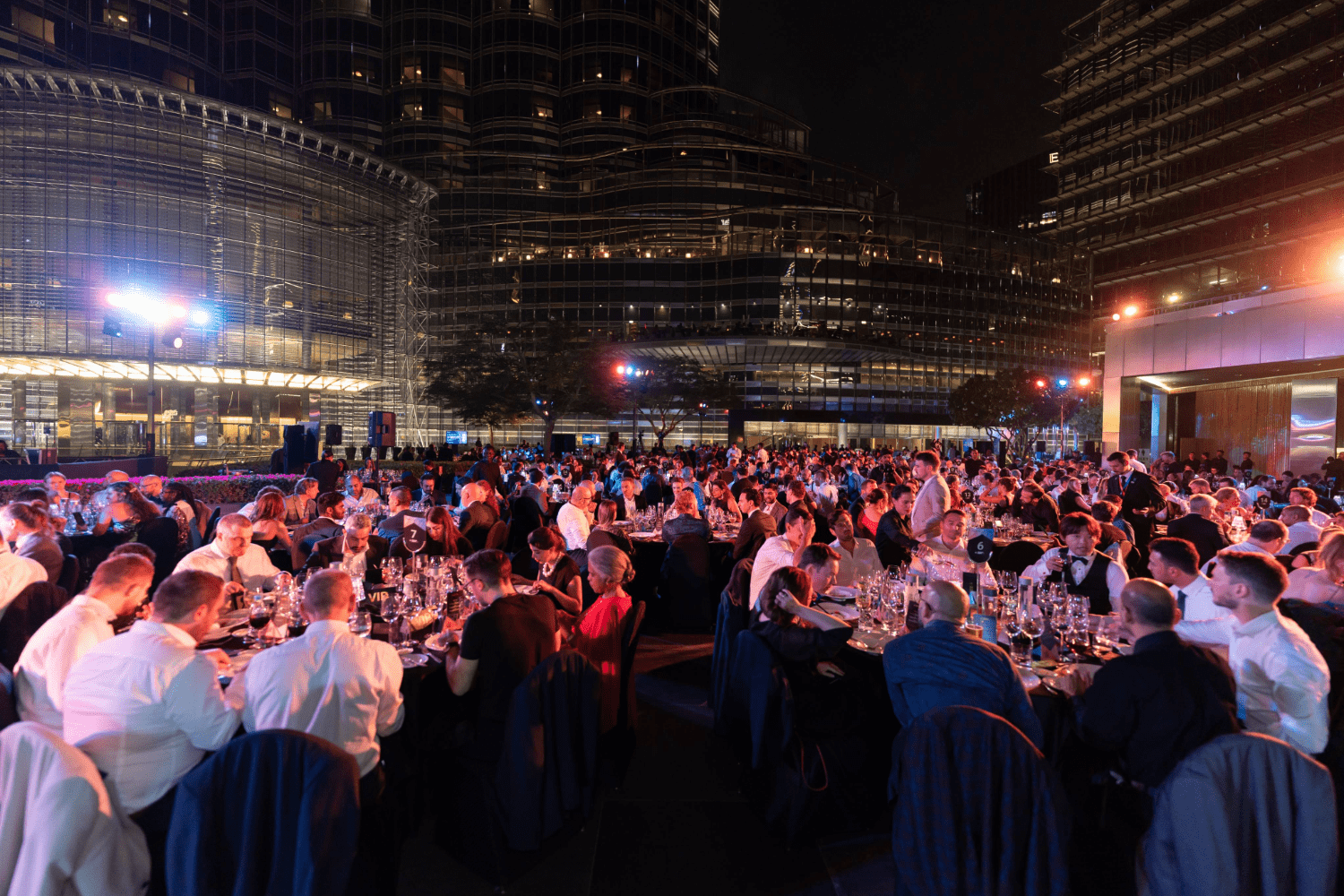
Building Communities, Not Just Events
When was the last time an event made you feel something real? Not just entertained, but genuinely connected to a person, a purpose, or a community?
We’re more connected than ever, yet more isolated.
In 2023, 8.4 million people in the UK lived alone. Remote working is the norm, but for over half of remote workers, it’s also a source of loneliness. For all our digital likes and virtual meetings, we’re missing something deeper: meaningful, in-person connection.
The shift is already happening, and people are turning to events.
51% of eventgoers show up to try something new and meet others. That’s the power of events done right. And in today’s world, it’s never been more vital.
What does that look like in real life?
For Gen Z, it’s fan-fuelled meetups, where a love for an artist or a cause sparks real-world friendships. Think Swiftogeddon or Harry’s House Party—offline, on purpose, and filled with shared joy.
For Millennials, it’s intimate supper clubs and storytelling nights. It’s about gathering around shared interests—food, culture, books and reconnecting over slower, deeper conversations.
For Boomers, it’s urban exploration. 83% say they’re open to city-based experiences that allow for discovery and connection. Walking tours, community festivals, or hobby-led groups. They’re not just showing up; they’re seeking belonging.
What can brands and organisers do?
Create space for conversation, not just consumption.
Design events with discussion in mind—roundtables, breakout corners, Q&As that go two ways. The best moments often happen in the margins, not the main stage.
Make it easy to keep in touch.
Follow up with more than a thank-you email. Start a WhatsApp group, a LinkedIn thread, or even host a virtual reunion. Let attendees carry the connection forward.
Build around real interests, not just trends.
What does your audience actually care about? Find the cultural overlaps and common ground—and build from there.
Make room for openness.
The most powerful events acknowledge the full human experience. Create space for honesty, mental health conversations, and growth. People open up when they feel safe, and that’s when real connection happens.
Here’s the truth
You can’t manufacture belonging. But you can design for it.
When events feel human—when they make people feel seen, heard and included, that’s when they become more than a moment. They become something people want to come back to.
The future of events isn’t bigger. It’s closer. More intentional. More personal. More connected.
Let’s stop thinking of events as one-offs. And start building communities that last.
Want more on what different generations expect from the future of events?
Download our Unlocking Experiences report now — packed with real-world insights, strategies, and behaviours straight from the research. It's everything you need to stay ahead.
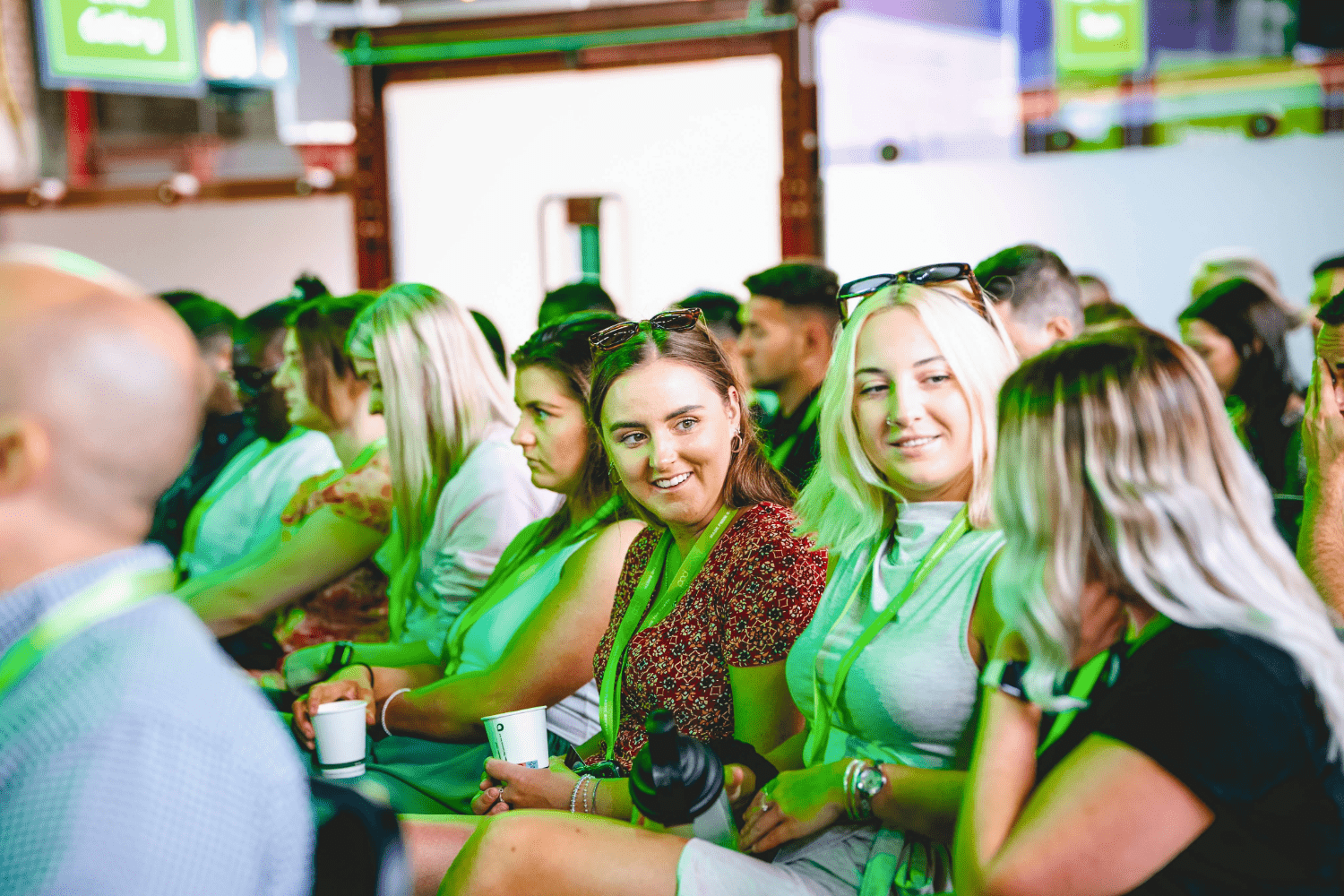
Why Events Are the Cure for Loneliness – And How Brands Can Build Community
In an age of constant digital connectivity, loneliness is on the rise. In 2023, 8.4 million people in the UK lived alone, and remote work has only heightened the situation. The average Brit now has just 3.7 close friends, down 30% in a decade. We may be more "connected" than ever online, but the need for in-person, authentic connections is stronger than ever.
That’s where events come in. People aren’t just attending events—they’re investing in them to build real connections and fight loneliness. In fact, in Q3 of 2024, UK companies boosted their event budgets by 9.9%, and the UK events market is set to hit $139.9 billion by 2032. But how can brands tap into this growing demand and use events to build meaningful communities? Let’s dive in.
Events Combat Loneliness and Foster Connection
Loneliness is a growing concern, but events are a solution. 41% of UK shoppers say local events help create a sense of togetherness. In an era dominated by social media and digital interactions, events provide a rare space for real, unfiltered connections that last long after the doors close. They allow people to engage in meaningful, vulnerable conversations—something that’s hard to replicate online.
How Brands Can Build Community Through Events
- Create Safe Spaces for Authentic Connection
Design events that allow for real, raw conversations about mental health, personal growth, or shared interests. These spaces help foster deeper, more meaningful relationships. - Focus on Community Over Transactions
People don’t want to feel like just another attendee—they want to belong. Build events around shared values like sustainability, wellness, or hobbies. Aligning your event with a purpose helps attendees connect beyond transaction. - Facilitate Cross-Generational Connections
Loneliness isn’t limited to one generation. Design events that bring together people of all ages. This could include mentorship programmes, panel discussions, or collaborative workshops, which help bridge generational divides. - Prioritise Intimacy and Empathy
Massive conferences are impressive, but people crave intimate experiences. Focus on smaller, personal events that allow for meaning. - Encourage Post-Event Connection
The sense of community shouldn’t end when the event does. Build in opportunities for attendees to stay connected through online communities, follow-up meetups, or ongoing events. This ensures the sense of belonging continues.
Events as a Catalyst for Change
Events are more than just an opportunity to showcase your brand—they’re a platform for brands to help combat loneliness and foster community. In today’s world, people are looking for more than just surface-level connections—they’re looking for belonging. And events are the perfect way to deliver that.
To discover what audiences truly want from events and learn how to foster a sense of community and belonging with your attendees, download our Unlocking Experiences report. Explore what different generations expect from events and future-proof your experiences with purpose and lasting impact.
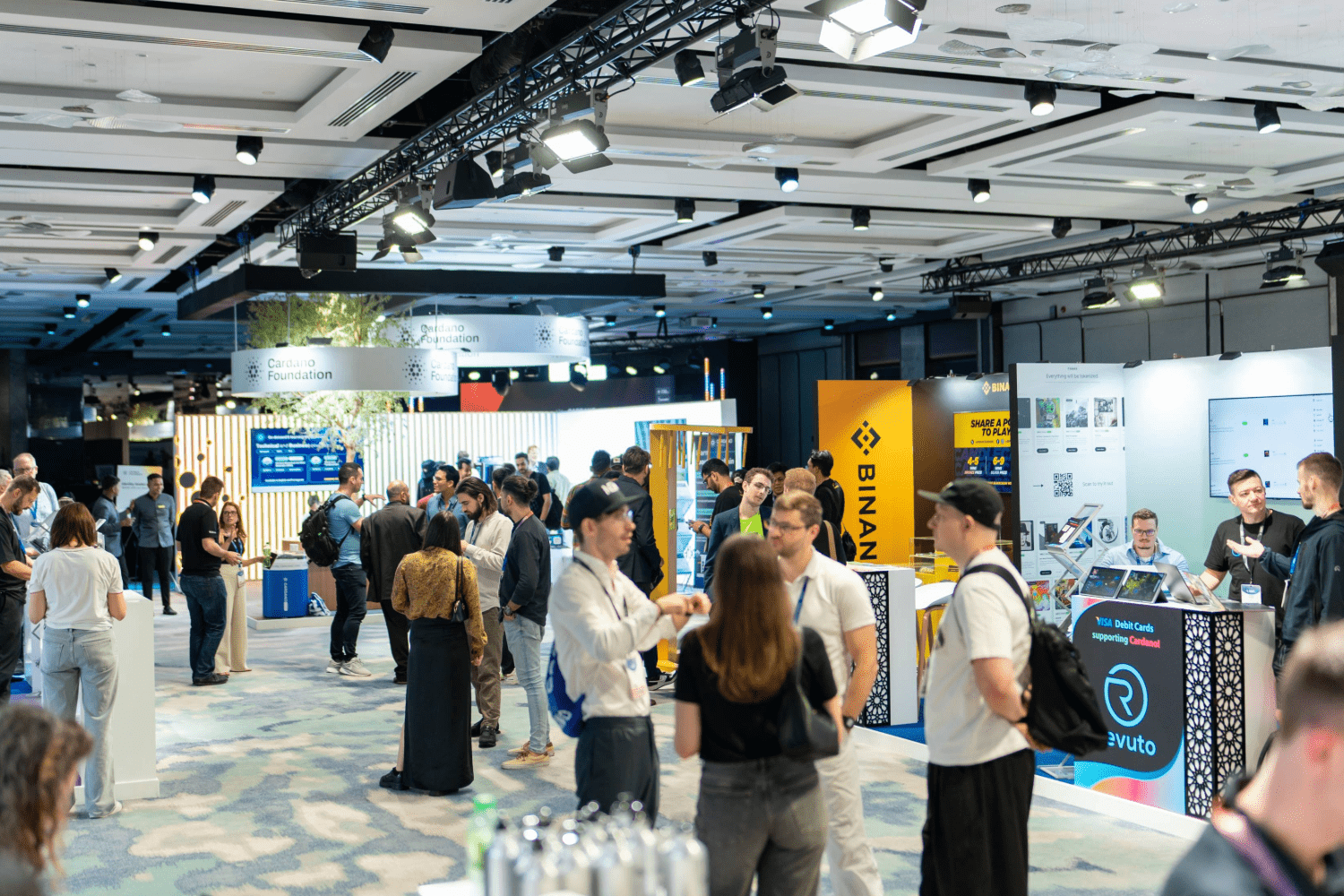
The Marketing Illusion: Why digital alone won’t cut it anymore
The latest IPA Bellwether Report confirms what leading marketers already know: events aren’t just back, they’re dominating.
In Q4 2024, events emerged as the top-performing marketing category with a record-breaking net balance of +12.3%, the highest in the survey’s history. And this isn’t a temporary spike; investment in live experiences is set to continue to climb throughout 2025 and 2026 as businesses double down on face-to-face engagement.
Why? Because in a world of algorithm shifts, declining engagement and relentless digital noise, live experiences offer something no other channel can - undivided attention.
Digital fatigue is real - Marketers are losing the battle for attention
Marketers are being pulled in every direction, investing in paid, earned and owned media while grappling with shifting consumer behaviours. The explosion of digital channels has led to fragmentation, making it harder than ever to create meaningful engagement. Attention spans are shrinking, ad fatigue is real, and brand-building tactics that once worked are losing impact. Marketers are not just competing with direct competitors - they're battling for seconds of attention in an endless sea of content.
The numbers tell a stark story. Research from Forrester indicates that 65% of B2B buyers disengage from brands that provide generic digital content, while Gartner reports that 80% of B2B buying decisions involve direct human interaction, even in a digital-first world. Meanwhile, event-generated content earns 4x more social media engagement than static digital campaigns. This is where live experiences change the game.
The ROI wake-up call: Events are the smartest investment in marketing right now
The data speaks for itself - events aren’t just holding their own; they’re outperforming every other marketing category. The latest Bellwether report shows that businesses are making a renewed, long-term commitment to live experiences because they deliver measurable returns. Events build brand equity and drive immediate action, making them one of the few channels that deliver short-term impact and long-term growth.
Digital campaigns might provide reach, but events deliver results. Deals that might take months to nurture online are being closed in days through face-to-face interactions. While digital advertising fights rising costs and declining engagement, events deliver results that marketing teams can’t afford to ignore. Unlike online ads that compete for milliseconds of attention, live experiences create immersive, distraction-free environments where brands can build genuine connections.
According to the Event Marketing Institute, 74% of attendees leave an event with a stronger opinion of a brand, and 70% go on to become regular customers. It’s why Bizzabo reports that 87% of executives are increasing their event budgets - because face-to-face engagement converts at a higher rate than digital marketing leads. Events don’t just generate brand awareness; they accelerate pipeline movement, making them one of the smartest investments in today’s cluttered marketing landscape.
The science is clear: People remember experiences, not ads
Events tap into something deeper than clicks and impressions - they create moments that last. Neuroscience tells us that emotionally charged experiences are stored more vividly in our memory. This is known as ‘flashbulb memory’ - the reason we remember powerful, real-world moments far more clearly than yet another ad scrolling past our feed.
Beyond memory, there’s also the impact of shared experiences. When people come together in a live setting, they don’t just absorb information, they feel it. This amplifies emotional connection and brand loyalty. The result? Attendees don’t just engage in the moment - they carry that engagement with them, becoming brand advocates long after the event is over.
Smart events: The data goldmine that marketers are ignoring
Events are no longer just about the experience on the day - they are a goldmine of data, feeding into smarter, more targeted marketing strategies. With seamless CRM integration, brands can track attendee engagement, capture real-time insights and personalise follow-ups with pinpoint accuracy. Every interaction at an event - who attended which session, who engaged in conversations, who showed buying signals - translates into actionable intelligence that drives revenue.
This isn’t vanity metrics; this is real behavioural data that gives marketers the power to make smarter, faster decisions. In an era where AI and automation dominate digital marketing, the ability to blend deep human connection with intelligent data is what sets brands apart. Events don’t just create moments; they create momentum, fuelling ongoing engagement and long-term brand loyalty.
The brands winning in 2025 are investing in experience, not just exposure
The IPA Bellwether findings send a clear message. Live events aren’t just surviving in the marketing mix; they’re thriving. In an era of rising promotional spend, smart businesses are putting long-term brand building at the forefront, using experiences to drive both emotional connection and bottom-line impact.
As businesses plan for 2025 and beyond, the most successful brands won’t just be seen and heard - they’ll be experienced.
In a world oversaturated with content, the real challenge is standing out in a meaningful way. How does your brand ensure it isn’t just another name in a crowded digital feed, but a presence that commands attention, drives action and delivers lasting impact? In a world saturated with marketing messages, the ability to create meaningful engagement is what sets brands apart - not as a standalone tactic, but as a force multiplier that amplifies digital, content and brand strategy.
The brands that will lead in 2025 and beyond will be the ones that embrace the power of presence, bringing people together in ways that digital alone simply cannot achieve. The question is, how will your brand rise above the noise and create real, lasting engagement?
At First Event, we design experiences that command attention, forge emotional bonds and inspire action. Because in an age of distraction, the most valuable commodity isn’t content. It’s connection.
Ready to turn live experiences into real business impact? Let’s talk about how we can help your brand accelerate deals, strengthen customer loyalty, and drive measurable growth through powerful events. Get in touch with us today.
Written by Claire Knox, Marketing & Communications Director, First Event
Claire has 25 years of experience in marketing across B2B and B2C sectors, having worked both agency-side and in-house. At First Event, she is driving the company's growth as a full-service event agency, setting the direction for how the brand engages with clients, partners and industry talent, while strengthening the company’s end-to-end services. Known for her approachable and collaborative leadership style, Claire fosters strong relationships with teams and stakeholders alike. Claire is skilled in strategic thinking, creative problem-solving, and aligning teams with a clear vision, always bringing energy, focus and a forward-thinking mindset.
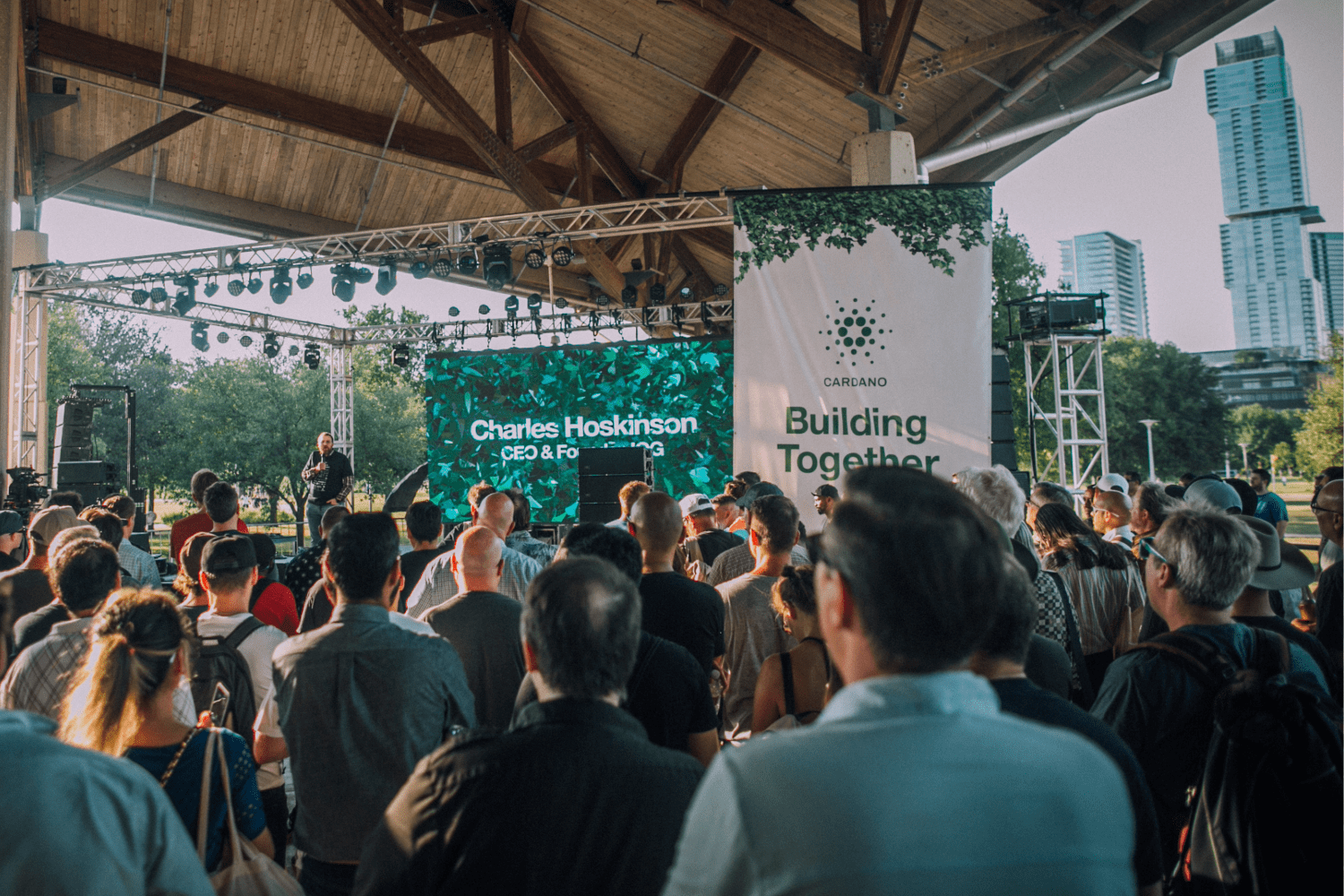
How to Align Your Event Strategy with Attendee Values and Drive Meaningful Impact
Now more than ever, attendees are seeking experiences that reflect who they are and what they care about. And it’s not just talk, 35% of UK office workers say they’d consider quitting their job if their employer took no action on climate change. That same level of accountability is now being applied to brands and the events they host.
So, how can your events not just align with attendee values, but actively champion them?
1. Start with substance, not slogans
Today’s audiences are savvy. They’ve seen the greenwashing, the rainbow washing, and the hashtag activism that fades after a marketing campaign ends. Pop-up events are being dismissed as “expensive Instagram gimmicks” by 55% of Gen Z, who are increasingly sceptical of surface-level experiences.
The takeaway? Ditch the gimmicks. Instead, embed your values into every layer of your event—venue selection, supplier choice, waste management, and even your speaker lineup. Authenticity shines through when action backs up intention.
2. Make it easy to do good
Attendees want to engage with causes they care about, but friction kills intention. Want to drive real impact? Make it simple. Integrate donation options into your registration flow, provide carbon offsetting at ticket checkout, or host hands-on workshops that turn awareness into action.
Remember: people are looking for events that help them live out their values. When you remove barriers, you unlock their power to make a difference.
3. Tell stories with impact
Want to show attendees that your event aligns with their values? Don’t just say it, show it. Use real stories and data to illustrate your impact. Did your event divert waste from landfill? Power itself with renewable energy? Raise funds for a grassroots charity?
Wrap those wins into a compelling narrative. This is where Values Storytelling becomes your secret weapon. Use post-event wrap-ups, social content, and on-site activations to make attendees feel part of a bigger mission.
4. Create space for belonging
Every generation is seeking connection and meaning. Boomers feel underrepresented, millennials are climate-conscious, and Gen Z craves honesty and inclusivity. Your event can become a space where these audiences feel heard, seen, and valued.
That means spotlighting diverse voices, encouraging open dialogue on important issues, and ensuring your messaging is inclusive.
5. Co-create with your audience
Your attendees don’t just want to be talked at, they want to be involved. Build a feedback loop that allows them to share their views and shape future experiences. This not only improves your event’s values alignment, but also strengthens loyalty and advocacy.
In short: values aren't a trend—they’re the new foundation of experience design. Align your event strategy with what people care about, and you’ll not only create moments that matter—you’ll inspire movements that last.
Ready to create events that mean more? Your audience already is. Contact us today.
For more on this, download our latest ‘Unlocking Experiences’ report to dive deep into how your brand can connect with the different generations through events.
Heading Here
Lorem ipsum dolor sit amet, consetetur sadipscing elitr, sed diam nonumy eirmod tempor invidunt ut labore et dolore magna aliquyam erat, sed diam voluptua. At vero eos et accusam et justo duo dolores et ea rebum. Stet clita kasd gubergren, no sea takimata sanctus est Lorem ipsum dolor sit amet.
Heading Here
Lorem ipsum dolor sit amet, consetetur sadipscing elitr, sed diam nonumy eirmod tempor invidunt ut labore et dolore magna aliquyam erat, sed diam voluptua. At vero eos et accusam et justo duo dolores et ea rebum. Stet clita kasd gubergren, no sea takimata sanctus est Lorem ipsum dolor sit amet.

